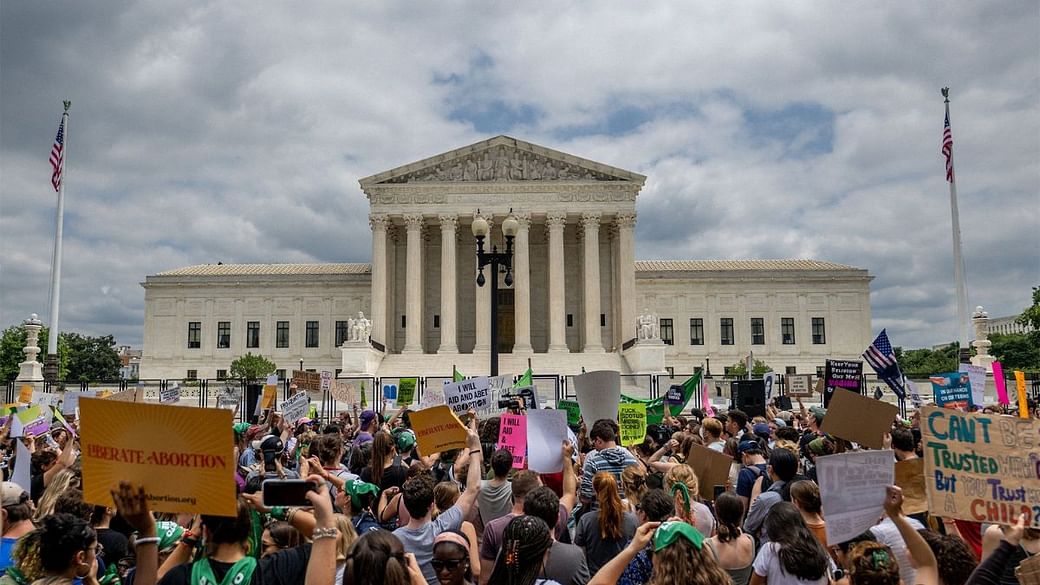From The Economist
Should a fair country allow citizens to be treated differently based on the colour of their skin? Most people would say that it should not. But others insist that it should—if the ends are suitably enlightened.
Not long after America dismantled two centuries of slavery and segregation, it embarked on a project of “affirmative action”: a system of legally sanctioned positive discrimination for African-Americans (later expanded to other “under-represented minorities”) who sought entry to selective universities. At the time the affront to liberal norms of fairness and equality under the law was assuaged by the fact that the beneficiaries of the policy were oppressed not long ago. Yet after half a century, one marked with more racial progress than setbacks, it remained the case that an applicant to America’s top universities with the right skin colour had a much better chance of admission than one with identical credentials but the wrong skin colour. On June 29th the Supreme Court terminated the scheme.
It was right to do so. That is because affirmative action rested on contorted constitutional logic. It was also broadly unpopular outside progressive circles. Worst of all, it only marginally ameliorated America’s yawning racial gaps. Despite the sermonising of its administrators, even with race-based affirmative action the country’s best universities never represented America. The very same universities offer extreme preferences to children of alumni and donors—a shadow, unjustifiable affirmative-action scheme for the white and wealthy hidden behind the prominent one for black and Hispanic applicants (a disproportionate share of whom were wealthy themselves).
The Supreme Court’s ruling will reverberate widely. “Eliminating racial discrimination means eliminating all of it,” wrote Chief Justice John Roberts in his majority opinion. This will surely encourage lawsuits to end racial preferences in other areas, such as government contracting. But the immediate impact will be on university admissions.
A touch of class
Something better can come out of the demise of the present regime. Start with the shaky legal justification for race-conscious college admissions. After the civil war, America’s constitution was amended to guarantee all of its citizens due process and equal protection under the law, regardless of their race. Yet for decades, under Jim Crow, many states prevented black people from voting, forbade inter-racial marriage and enforced racial segregation in schools, among other outrages. After the correction of the civil-rights era, America began to try to live up to its constitutional promise. It passed landmark civil-rights legislation that forbade unequal treatment “on the ground of race, colour, or national origin”.
Yet for decades the Supreme Court allowed positive discrimination in universities. How so? The policy was justified, the justices of the day argued, not as reparations for a terrible past, but because the value of diversity was compelling for promoting “cross-racial understanding and the breaking down of racial stereotypes”. It was always odd that affirmative action was explicitly crafted for the benefit of students’ white peers. Nonetheless elite universities leapt on the rationale of diversity, using it to construct racially balanced classes while suggesting that these were the happy result not of quotas, which are banned, but of “race-conscious” holistic admissions schemes that treated people as individuals and not as avatars for their racial group.
Contrary to the dissent of the court’s liberal justices, who claim the new ban “will serve only to highlight the court’s own impotence in the face of an America whose cries for equality resound”, Americans were not happy with the old policy. In 2020 even liberal Californians voted down a referendum to reinstate affirmative action, banned in the state since 1996. Polls show that many more Americans oppose taking race into account for admissions than favour it. That is true also of Asian Americans, who typically lean left but bear the heaviest cost of race-based admissions because they are deemed “over-represented” (despite suffering discrimination in their own right).
The court’s decision could be the catalyst for fairer admissions. The extraordinary benefits that Harvard and Yale shower upon the children of alumni and donors make a mockery of meritocracy and those institutions’ self-professed progressivism. Those practices should go.
Universities that wish to do their bit for social justice should stop using race as an (often inaccurate) proxy for disadvantage and start looking at disadvantage itself. Instead of giving a leg-up to members of groups that are on average badly off, they should favour individuals who are actually poor. One randomised controlled trial found that simply offering application-fee waivers to promising students from poor backgrounds dramatically increased the chance of their applying to, and attending, highly selective universities.
There is reason to worry that elite universities will seek stealthy ways to preserve racial preferences. Many are dropping requirements for standardised tests, which would make quiet discrimination against members of unfavoured groups who do well on such tests harder to detect. Some are busily searching for loopholes. In a letter sent to its students and alumni, Harvard, which was party to one of the Supreme Court cases, quoted a portion of the majority opinion that opens the door to considering race if an applicant were to write about it in a submitted essay. “We will certainly comply with the Court’s decision,” its leadership wrote, impishly.
Rather than coaxing a generation of minority students into drafting adversity statements—and continuing to admit the hereditary mediocracy through the backdoor—schools like Harvard would do well to try to craft a fairer system of admissions. These universities should not be proud of the well-monied (albeit multicoloured) monoculture they have inculcated. They should take the opportunity to become the progressive institutions they claim to be. ■
